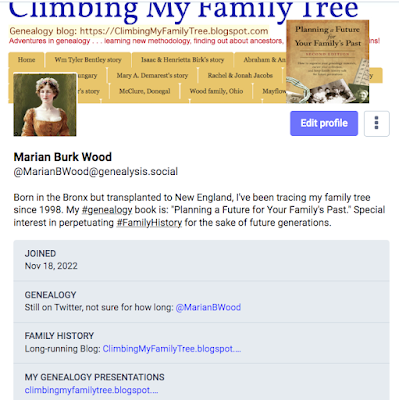My maternal grandmother had 10 siblings, and my paternal grandmother had 8 siblings. Most of these people married, so I'm a niece (and great-niece) by marriage as well. That's a lot of aunts, uncles, great aunts, and great uncles.
I've been honoring their memory by not only adding them to my family trees but also creating or improving memorial pages on Find a Grave. This includes linking my ancestors' memorial pages to the pages of their parents, siblings, and children.
When I add a new memorial page, Find a Grave asks whether I'm a close relative. I answer yes and then click the box to reflect the kind of relationship. As shown directly above, the "niece/nephew" box also includes an option for "great-niece/great-nephew."
For the first time yesterday, I discovered that Find a Grave limits how many people a single user can claim in a niece or nephew relationship. At top of this post, you can see the notice displayed on Find a Grave when I attempted to have my niece relationship displayed on the memorial page of an uncle who died in the 1980s--someone I'd known and hugged.
Find a Grave's explanation is:
We limit the number of memorials you can manage within each relationship type to help prevent abuse.
There is an option to appeal to the support center...which I may do at some point. For now, at least I'm the manager of these memorial pages and can add bite-sized bios, photos, etc.
























